Takato Yamamoto is among the most exciting and provocative artists I’ve found lately. You already know what I’m talking about if you’ve seen his art creations.
I recommend investigating this Japanese illustrator and manga artist and his growing popularity over the last several years.
Takato Yamamoto Creating Heisei Estheticism
After graduating from the painting department of Tokyo Zokei University, Takato Yamamoto began experimentation with the Ukiyo-e Pop style and art methods. From there, his creative evolution led him to develop his unique style, which he branded “Heisei Estheticism.”
The style he created combines Japanese ukiyo-e painting influence with Western gothic art, portraying an incredibly unique and dark but beautiful effect.
One Who Lives in the Mountains
Takato Yamamoto was born in Akita Prefecture, Japan, in 1960. His last name is Yamamoto, meaning ‘one who lives in the mountains.’
After working part-time as a commercial illustrator developing commercials for Fujitsu, he eventually dedicated himself to his painting and the visual artist craft.
He began to create his flare for a cultural method tracing back hundreds of years.
Takato Yamamoto and The Ukiyo-e Style – 山本タカト
If you’re unfamiliar with Japanese art, we should go back to the 17th century, when the genre of Ukiyo-e began. “Ukiyo-e” translates to “pictures of the floating world.”
In Japan, this art method produced woodblock paintings with scenes of historical events, folk tales, landscapes, and travel scenes. 17th-century Ukiyo-e artwork also featured female beauties, sumo wrestlers, and actors.

In the late 1600s, ukiyo-e works became famous by a well-known artist named Hishikawa Moronobu. Many great Japanese artists followed Moronobu’s footsteps, taking the ukiyo-e style to the next level.
Ukiyo-E Style
Perhaps the most famous and well-known ukiyo-e artist was Katsushika Hokusai, who created ‘The Great Wave off Kanagawa,’ known as one of the world’s most recognizable pieces of artwork.
The work of art pictures a gigantic wave off Sagami Bay’s coast with Mount Fuji in the background.
The Great Wave
To give you an idea of the importance and significance of Hokusai’s ukiyo-e style, the ‘Great Wave’ work of art, Vincent van Gogh was known as a great admirer of Hokusai.
It was said that Van Gogh remarked the painting had “a terrifying emotional impact.”
A YouTube comment section viewer remarked, “and I can’t even stick the screen protector on my phone.” That describes my feelings exactly as I watch this incredible artist.
Takato Yamamoto Reinventing Ukiyo-e, The Floating World
Understanding the historical impact of the ukiyo-e artistic style in Japanese culture, you can now begin to appreciate a modern-day artist bringing back a three-hundred-year-old method and incorporating his twist.
Takato Yamamoto is said to have built on the ukiyo-e method, only bringing it into the modern-day with his ‘Heisei Estheticism’ style.
Caught Between Worlds
Paintings such as Twin Roses sold for nearly $80,000 at a Sotheby’s auction over ten years ago. Sotheby describes the work showing two figures as “dissolving away into a blue and black abyss, caught in between this world and the next.”
‘Lucy’s Mutation’ – acrylic on canvas, 2014
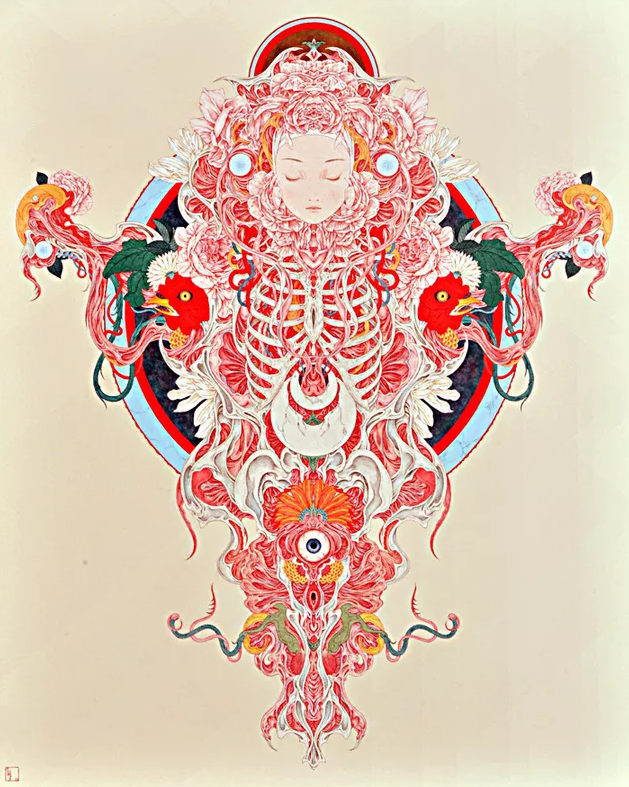
‘Sacred Circulation’ – Ukiyo-e style, 2015
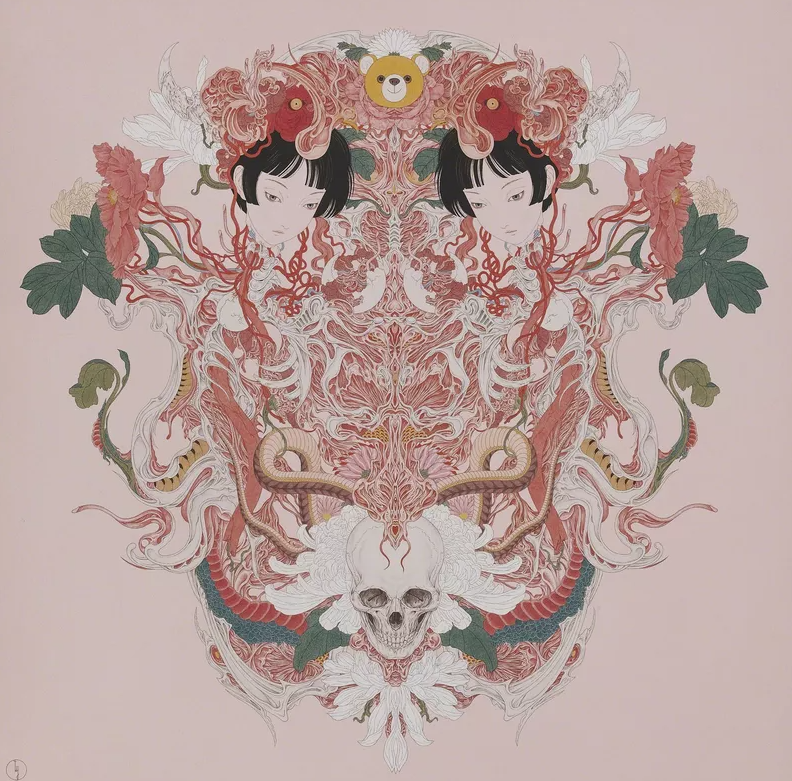
‘Chimera Tombstone’ – Ukiyo-e style, Heisei Estheticism, 2015
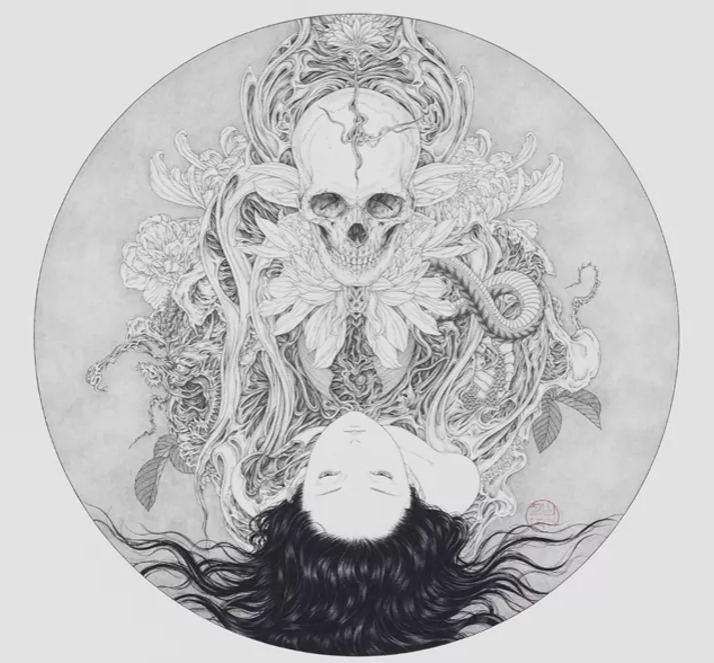
Much like a Rorschach inkblot test can produce a wide-ranging response to every person, a Takato Yamamoto work can allow the viewer to feel whatever they desire when they look at the art.
Whether it’s ukiyo-e, Estheticism, Ero Guro, or anime, it’s up to the viewer to decide.
Takato Yamamoto combines beautiful yet grotesque themes. Intriguing and convoluted, dark and full of life. Calmness but with an unnerving infusion of emotion.
As one art historian has described Yamamoto, “he’s constructed a painted labyrinth that conceals as it reveals.” Some would call Yamamoto the king of Japanese aesthetic arts.
Another art critic has said about Yamamoto, “There’s much that’s superficially familiar in Takato Yamamoto’s art, “Boy’s Love” tableaux with fey young men in various states of undress mooning over each other, then the perennial Japanese obsession with naked women bound by ropes.
But closer examination reveals a degree of finesse and imagination that elevates his work away from the porn ghetto into the rarified realm of Decadence.”
He’s genuinely a renowned artist of fantastic painting. Takato Yamamoto’s art is a vital force—the Japanese artist who dares with Heisei Esthiticism gaining wide recognition while blazing his trail.
Takato Yamamoto Books and Japanese Illustration
Takato Yamamoto and publisher Treville produced works in a series of art books and aesthetic novels over the last several years. Consistent in format and growing in popularity among fans of his career.
These are dedicated collections of his works, and each new book released by Yamamoto explores a new theme relating to his recent explorations and artistic emotions.
In 2018, an exhibition was held in Shibuya, Tokyo, to commemorate his 20-year career since his first exhibition.
You can find Yamamoto books on AbeBooks or Amazon for right around $100.
- Coffin of a Chimera
- Altar of Narcissus
- Necrophantasmagoria
- Scarlet Maniera
- Nosferatu
- Divertimento
Be sure to check out his newest book, “Japonesthetique,” on sale now for $50.
An artist who develops his own Heisei Aestheticism style surely deserves closer examination. His art tends to draw in, captivate, shock, and intrigue, at the very least.
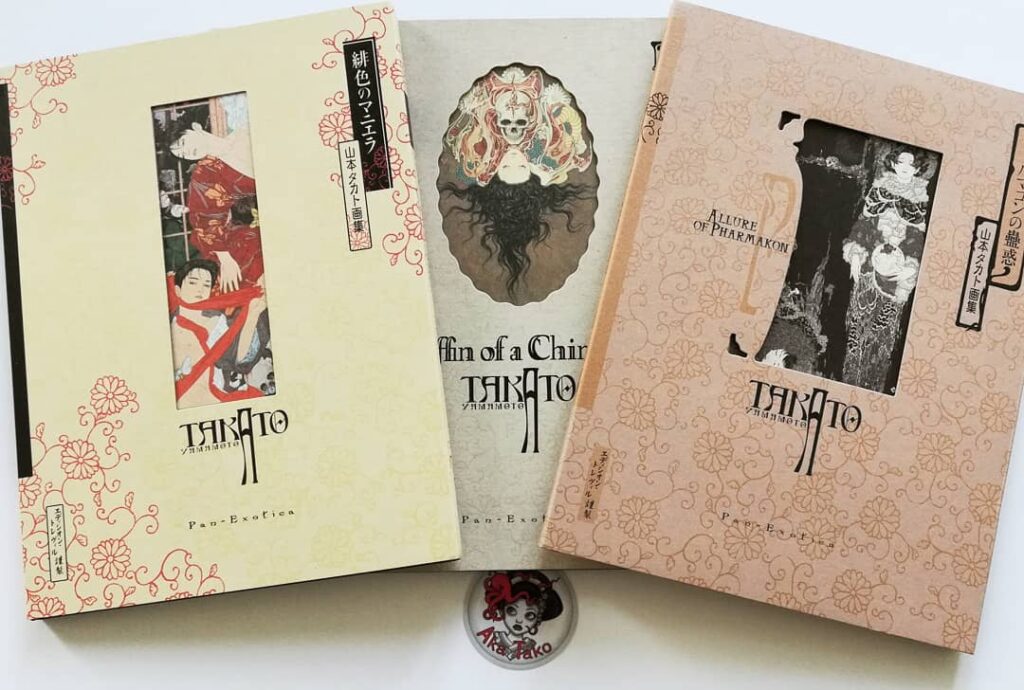
Takato Yamamoto is truly an original artist pushing the limits of possible possibilities with a remarkable degree of finesse.
Yamamoto’s work combines rich Japanese history and culture in a delicate and respectful way, yet punches you in the face by adding his style and horrific yet beautiful twist.
It’s tough to describe the range of emotion when viewing Takato’s works. It’s to be determined by each viewer what feelings Takato Yamamoto delivers.

Inside the Ukiyo-e Method and Artform
It’s fascinating to learn about the origins of the Ukiyo-e artform. Back in the 1600s, Japan began an economic growth period that benefited the working class.
As the common working class citizens began to enjoy their increasing wealth, they began to entertain themselves in the geisha districts. This began the search for a more hedonistic lifestyle, or Ukiyo, “floating world.”
Ukiyo-e Mediums
Paintings and sketches were applied to hanging scrolls, or woodblocks. Other works were painted on silk or canvas. With Ukiyo-e, the medium was as wide-ranging as the subject matter.
Masters of the Ukiyo-e artform were Kiyonaga, Kharaku, and Hokusai. And not long after their rise, Ukiyo-e declined.
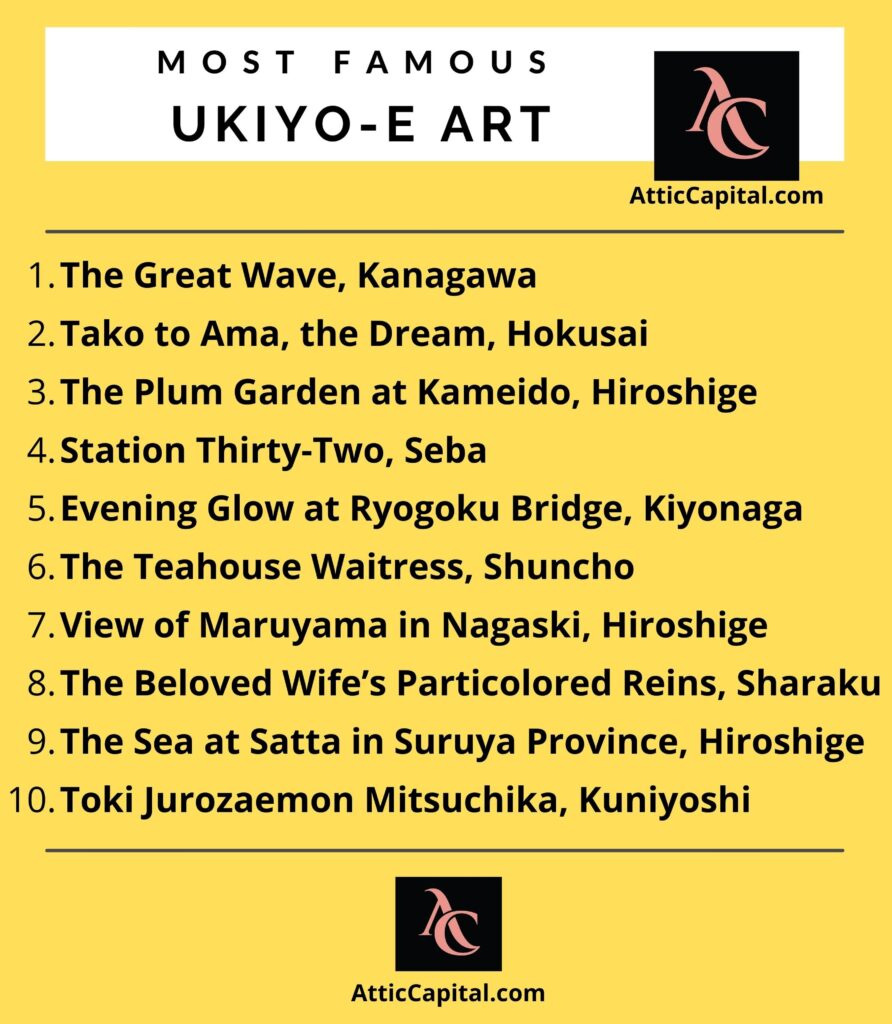
Decline and Return of Ukiyo-e
As economic conditions worsened in the 18th century, Ukiyo-e slowly began to fade.
Westernization is to blame for much of the decline of Ukiyo-e. European imported prints and competition from the growing interest in photography pulled artists away.
Now, a resurgence is underway in the Japanese artform. And an appreciation of the past is in full-swing for practitioners of the Ukiyo-e artform.
